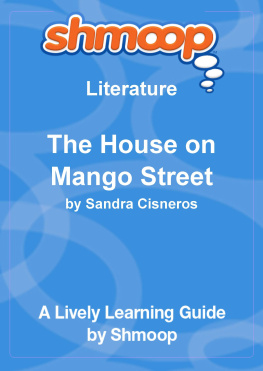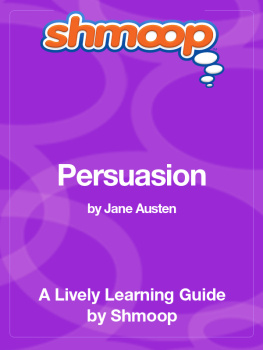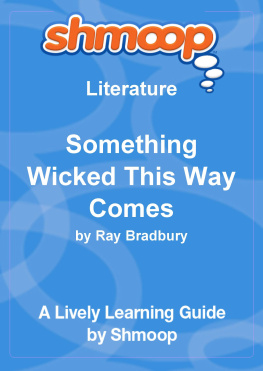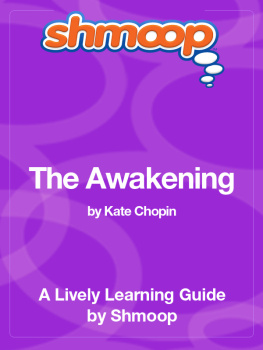
Table of Contents
In a Nutshell/Overview
Mexican American author Sandra Cisneros's novella The House on Mango Street is the story of a Latina girl named Esperanza Cordero who grows up on the mean streets of an inner-city neighborhood. Originally published in 1984, the novel enjoyed immediate critical acclaim, winning the Before Columbus Foundation's American Book Award in 1985. Now in its 25th year of publication, The House on Mango Street has sold over 2 million copies and is required reading in many middle schools, high schools, and universities across the country.
So, what's the big deal here? Why is everyone so infatuated with this book? Well, we have a couple of theories about that. First of all, you'll notice that it's not a difficult read. Like we said, The House on Mango Street is being taught both to thirteen-year-olds and college students. The writing is simplistic enough for younger readers to understand, while at the same time sophisticated enough to keep the interest of writers and literary scholars. Impressive, huh? And guess what? The author did that on purpose.
In her introduction to the 25th anniversary edition of The House on Mango Street, Cisneros explains that "she wants the writers she admires to respect her work, but she also wants people who don't usually read books to enjoy these stories too" (Introduction.19). In other words, the way Cisneros sees it, literature isn't an exclusive club. It's something that everyone should be able to enjoy, even those people who don't have much experience with reading literature because they're young or because they are busy working for a living. But just because her writing is easy to understand doesn't mean that it's boring or simplistic - pick up The House on Mango Street and you'll notice that each sentence is carefully crafted to evoke emotion, beauty, or even just the pleasure of sound. It's kind of like reading a poem that tells a story. (Oh, did we mention that Sandra Cisneros is also a poet?)
The other quality that makes this book so appealing is its pervading sense of optimism. Though many of the stories she tells are painful and sad, Cisneros never writes them with a sense of despair. Instead her characters display a determination to persevere, to reach, and to dream of a better life.
Cisneros's optimism is evident in her own varied career that has included such roles as counselor to high school dropouts, recruitment agent at Loyola University, and teacher of poetry in public schools. She started the Alfredo Cisneros del Moral Foundation to reward emerging Texan writers, and the Macondo Foundation to unite writers in fighting for social change. And, if that isn't enough evidence of her rosy outlook on life, consider the fact that she lives in a bright pink house, because, she says, "the colors make me happy" (source). Rock on, Sandra Cisneros.
Why Should I Care?
Esperanza Cordero is one of the most likable characters you'll ever meet. She's smart, she's funny, she's lonely, and charmingly awkward - she's just like you. OK, so maybe you didn't grow up in an urban barrio in Chicago. But who hasn't ever felt ashamed about some part of their identity, whether it's the amount of money their family has, the house they live in, or just being different from the other kids at school? Ever felt embarrassed about wearing the wrong shoes to a party? Meet Esperanza - we think you've got a lot in common.
Our point is that, on nearly every page of The House on Mango Street, you'll probably find something that will make you cringe. Or laugh out loud. Or whimper in empathy. It's that kind of book. It's almost impossible not to relate to the sassy, spunky heroine - a budding writer who survives the pain and humiliation of puberty by writing angsty, heartfelt poetry. (Sound familiar? We wrote embarrassing poetry in our teen years, too. But you'll never find it. Mwahhahaha.)
Esperanza is the kind of character that draws attention to the universal experience of being human, and especially to the particularly awkward time of life that we call puberty. Reading her story helps us to feel more connected with the people around us, because it reminds us that even though we've all had painful or embarrassing experiences, we all have the potential to overcome them. And that's kind of awesome.
What's Up With the Title?
It could be said that this is the story of a house. A house on Mango Street. Pretty straightforward, right? But right off the bat the title has us asking ourselves a few questions. Whose house is it? What's special about the house? Where's Mango Street?
Let's dig a little deeper. In literature, a house is rarely just a house - that's because the idea of a "house" carries certain connotations, or ideas that are connected with the word itself. When we think of a house, our mind makes all sorts of associations. We think of things like a home, a family, and a sense of belonging. We think of location, location, location - and we generally think of a cute little two-bedroom in the suburbs. You know, like something you'd see on
Leave it to Beaver or
The Brady Bunch. We also think of status, because it usually takes quite a bit of money to purchase a house, and being a homeowner suggests a certain amount of prestige.
Well, in a twisted way,
The House on Mango Street is about all of these things. It
is about a home, a family, and a girl who wants to feel like she belongs to community. But to a large extent the story defies the expectations we've formulated based on the title - Mango Street isn't in suburbia, for instance. It's not even in a nice part of the city. Nor is the house on Mango Street the kind of cute, tidy house that you see in television sitcoms. It's cramped and falling apart and doesn't even have a backyard to play in.
As it turns out, the ways in which the story deviates from the picture-perfect image that the title brings to mind are more significant that the ways in which it conforms to our expectations. Because, just as our vision of suburban cuteness is crushed, so is Esperanza's. And ultimately, this isn't the story of a house - it's the story of a girl, her disappointment, and where it leads her.
What's Up With the Ending?
The last chapter of
The House on Mango Street is a vignette entitled "Mango Says Goodbye Sometimes." The eight little (and we do mean little) paragraphs of this segment of Esperanza's story do a lot to summarize what she has learned in the course of the novella, and who she has become.
So, presuming you've read the rest of the book, this vignette will be a bit of a recap of Esperanza's development as a character. And if you haven't read the rest of the book, read the introduction to find out why Sandra Cisneros herself thinks you'll still be able to appreciate the ending. And then go ahead and read the rest of the book, because really, it's good.
So, who is our narrator? She's a girl who likes to tell stories, a girl who makes a story for her life. She's a writer. She seems a lot surer of herself than she did at the beginning of the book, don't you think? This is a girl with a calling in life.
She's also "a girl who didn't want to belong," a statement that reveals to us how much Esperanza has changed (44.3). Only two vignettes ago, Esperanza proclaimed, "I don't belong" to her friend Alicia (42.3). Here at the end of the book, however, Esperanza has accepted Mango Street's formative role in her identity.
To emphasize our point, let's look at the fourth little paragraph in this section. "We didn't always live on Mango Street," Esperanza writes (44.4). Sound familiar? The repetition of these few lines takes us back to the opening phrases of the book. Is the narrator bringing us full circle, suggesting that nothing has changed? Nope - quite the opposite, actually. She brings us back to the beginning to




















